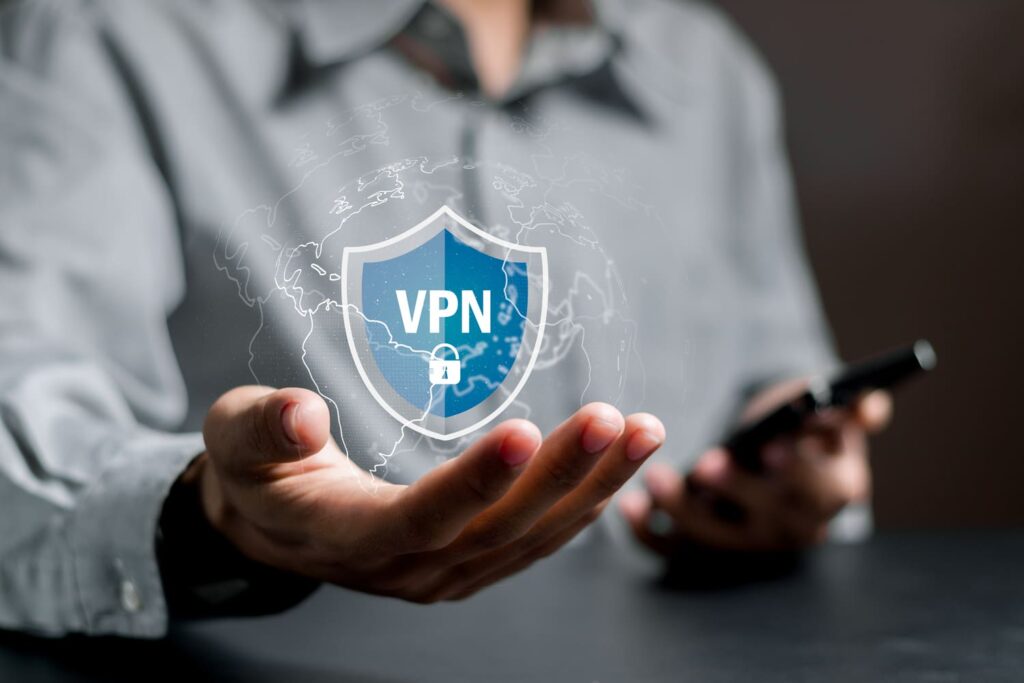For years, we trust antivirus as our main digital shield. Automatic updates, scheduled scan and that sense of security when seeing the notification of "no threat detected." But the game has changed - and fast.
According to the Ponemon Institute , 68% of organizations have already faced attacks that directly exploited the endpoints , even with active antivirus solutions . This data reveals more than a technical failure: it exposes a mismatch between the traditional model of protection and the sophistication of current threats.
Today, attacks camouflage in legitimate processes, operate directly in memory and often leaves no traces detectable by signature -based solutions. It is a new kind of challenge that requires a new layer of defense.
It is in this scenario that EDR gains protagonism. Acting in endpoints such as notebooks and critical servers, it expands visibility about what happens on devices, identifies signs of malicious behavior and performs quick actions to contain threats before they spread.
Throughout this article, we will continue to advance on our journey on cybersecurity , now, understanding why EDR has become a mandatory technology to protect the most vulnerable points of infrastructure, and with them business as a whole.
Enjoy the read!
What is Edr and where does it act?
Imagine a system that does not expect the attack to happen to act . EDR ( Endpoint Detection and Response ) is precisely that: a technology designed to see beyond the surface of devices, tracking unusual behaviors and acting fast before a threat gains space.
Unlike traditional solutions, which depend on known signatures, EDR continuously monitors network connected devices , so -called endpoints , such as corporate notebooks cloud , and even virtual machines and IoT. It collects real -time signals, identifies standard deviations and performs automatic responses, even in the face of unpublished or camouflaged threats.
Instead of just “blocking what is dangerous”, EDR observes the digital behavior of the device. If something tries to get out of the standard (for example, a suspicious process trying to access memory or establish an external connection), the tool acts isolating, blocking and notifying . All of this based on context, not just known threat lists.
What makes EDR so strategic is its ability to protect the most exposed point of digital operation: the end user . After all, it is in the notebook , the application server, or a border device that many gaps appear. And that's where Edr operates: where things actually happen.
Why traditional antivirus is no longer enough
For a long time, antivirus was the company's digital bodyguard. But the world has changed, and the attacks too. Today, what threatens your data is not just a virus with name and surname, but scripts hidden in legitimate files, commands that run straight into memory and external connections that escape from the radar.
Antivirus act as “wanted” lists: they bark what they already know. The problem is that digital criminals keep inventing new disguises . That's where EDR enters the scene. It does not depend on “facial recognition”: he observes the behavior.
If something tries to open a door that should not, access data at unusual times or start a suspicious connection, EDR realizes. And more than warning, he
EDR, XDR and MDR: What's the difference?
It is common to see these acronyms side by side. Although they seem variations of the same solution, they represent complementary approaches within an evolutionary journey of digital protection . Understanding the role of each one helps to make better decisions about the security maturity your company needs today, and where you can arrive tomorrow
- EDR ( Endpoint Detection and Response ) : EDR is the base. Focused exclusively with endpoints (such as notebooks , servers, virtual machines and other connected devices), it continuously monitors suspicious behaviors and automates quick responses to contain real time threats. It is ideal for companies that want to take the first step beyond antivirus;
- XDR ( Extended Detection and Response ) : When the company starts dealing with more complex environments, EDR alone no longer realizes. XDR expands vision by correlating data from different sources ( email , network, cloud , endpoints ) to identify laterally moving attacks or use multiple fronts. It connects the points and offers a coordinated and contextual response;
- MDR ( Managed Detection and Response ) : MDR enters the scene when it takes time and expertise to operate these tools. This is a specialized service that combines technologies such as EDR and XDR with a specialized team that operates 24/7 based on threat rules, analysis and intelligence, managing the entire response to incidents. It is a robust solution for organizations that need advanced protection but do not have an internal structure to manage it.
While EDR protects the “factory floor”, XDR offers panoramic view and MDR ensures that all this works with intelligence, scale and continuity. Together, these solutions form a modern defense ecosystem , capable of accompanying the sophistication of attacks and the speed of digital business.
The logic behind the EDR is clear: the more visible the behavior of the endpoints , the sooner we can react . But to understand the real impact of this technology, you need to go beyond theory and see where it actually operates.
Now that we understand the role and reach of EDR, it's time to look backstage and find out how this technology actually acts on the daily life of the devices.
How does Edr work?
If antivirus is like an alarm that fires after the invasion, EDR is the security agent who was already in the scene , following each suspicious movement. The strength of this technology lies in the ability to observe in real time, interpret subtle signs and act precisely before the threat spreads.
Next, let's see this operation logic that works in three steps: controlled analysis, containment and remediation actions and collaboration with the safety ecosystem .
Step #1: isolation and controlled analysis with sandbox
When the EDR identifies a suspicious activity that cannot be classified immediately, it uses sandboxing , a technique that performs the file or process in an isolated virtual environment, technology also used by solutions such as advanced antiviruses and email gateways
In this “digital laboratory”, EDR can observe threat behavior without endangering the system . If the file tries, for example, connecting to unknown servers or executing commands in memory, these actions are detected and documented.
This step is essential to understanding camouflaged threats and preparing more accurate answers, including tool detection mechanisms themselves
Step #2: automated response and remediation scripts
If the threat is confirmed, EDR departs for the action . Based on pre-configured policies and response playbooks isolate the infected network device, end malicious processes, external communications system cleaning
Instead of depending exclusively on human action, EDR performs remediation scripts restore the safe state of the machine . This means less exposure time, lower operational impact and more efficiency in damage control - especially in attacks that evolve in minutes.
In addition, these actions are recorded and auditable , which facilitates the investigation and reinforcement of defenses after the incident.
Step #3: Integration with SIEMS, Soars and the Security Ecosystem
And finally, it's time for Edr to share everything he saw, analyzed and did with the rest of the company's cybersecurity ecosystem. He sends detailed telemetry to platforms such as Security Information and Event Management (SIEN ) , such as Microsoft Sentinel ; It integrates with orchestration solutions (SOAR - Security Orchestration, Automation and Response ), firewalls , and XDR tools to expand visibility and generate coordinated responses .
Endpoint protection , but all digital infrastructure . That's why we say that EDR is no longer an isolated tool and becomes an active agent within an integrated security strategy, learning from each event and strengthening the company against future attacks.
As we reveal the backstage of EDR's performance, it is clear that he not only detects: he investigates, decides and acts on second fractions . What's more, its true value is the kind of threat it is able to face, those who go unnoticed by traditional systems and often pose the greatest risk .
In the next section, let's get to know these “invisible villains”, and understand why they require a technology as specialized as EDR.
What threats is the EDR able to detect that antivirus often ignores?
You can't stop what you can't see, right? And when it comes to modern cybership, this invisibility is the main weapon of criminals: codes that leave no traces, commands that seem legitimate, and access that mimics the behavior of an ordinary employee.
The EDR was created to deal exactly with this kind of threat: sophisticated, disguised and dynamic . Next, see concrete examples of the risks that go unharmed by antiviruses - but not by Edr:
- -day attacks : These threats exploit newly discovered software , failures for which there are no corrections ( patches ) or even public records. As there is no signature available, antivirus is unable to recognize them.
Practical Example : An employee updates the browser, and then an unprecedented process tries to modify system files. EDR perceives behavior change and blocks execution before exploit is realized;
- Fileless Malwares : Unlike malware , which settle like disc files, Fileless operate directly in RAM, using native tools like Powershell and WMI to execute malicious commands. Because they leave no physical tracks, they are invisible for file -based solutions.
Practical Example : An email with a link triggers a Powershell script that tries to connect to a remote server. EDR intercepts the attempt, isolates the device and ends the malicious session - all in seconds;
- Advanced Persistent Threats (APTs - Advanced Persistent Threats ) : These are sophisticated attacks that occur in several steps and over weeks or months. They use valid credentials to move laterally inside the network, seeking critical actives without lifting suspicions.
Practical Example : An invader, using a login , begins to access data volumes at unusual times and outside his routine. EDR recognizes this anomalous pattern and begins a containment protocol before the movement gains scale;
- Ransomware and digital extortion : These attacks encrypting essential files and require financial redemption in exchange for data return. The damage is fast and often irreversible. But EDR can stop the attack chain as soon as it begins.
Practical Example : The device begins to encrypt a large -scale files and tries to connect to multiple Endpoints of the network. EDR detects the explosion of unusual events, blocks malicious traffic and prevents ransomware from spreading.
This ability to see what antivirus ignores , and act before the impact spreads, is what makes EDR a technology needed for digital business . And their gains do not stop in technical containment: each neutralized threat also represents a step further towards compliance, data governance and market trust, as we will see below!
In addition to protection: EDR's strategic benefits
Investing in EDR is not just a response to invisible threats: it is a strategic decision with real impacts on the operation, governance and reputation of the company.
As cybersecurity becomes part of business decisions, tools such as EDR are no longer “technology” and are allied with continuity, compliance and confidence . With called data, quick answers and integration with the entire safety ecosystem, EDR helps to turn risks into learning, incidents into insights and alerts into competitive advantage.
Next, we highlight the 6 main benefits that put EDR at the center of digital strategy:
- Compliance and governance with full traceability : EDR records all relevant events, from the first sign of suspicious behavior to the response performed in auditable detail. These data are fundamental to prove compliance with legislations such as the General Personal Data Protection Law (LGPD), GDPR ( General Data Protection Regulation ) and regulatory frameworks of sectors such as health and financial. In addition, they facilitate audits and reinforce transparency in information security processes;
- Business continuity with minimal interruptions : EDR response automation drastically reduces the time between detecting and containing an attack, preventing it from spreading and causing stoppage. In cases such as ransomware , this agility may be the difference between rapid recovery and a millionaire damage by Downtime ;
- In -depth visibility on the digital environment : By continuously monitoring endpoints and collecting telemetry in real time, EDR provides precise view of device behavior. This allows you to anticipate risks, identify structural vulnerabilities and better understand the company's attack surface, facilitating more strategic safety decisions;
- Operational efficiency with lower response cost : With playbooks and embedded threat intelligence, EDR reduces the need for manual intervention in many incidents. This relieves the overload of IT and Safety teams, improves productivity and reduces the costs associated with screening, investigation and recovery;
- Image strengthening and market confidence : Demonstrating effective control over digital assets is a competitive differential. The use of advanced technologies such as EDR shows the market, customers and investors that the company takes seriously data protection - which can influence commercial decisions, partnerships and institutional reputation;
- Continuous safety at remote and hybrid work : With endpoints distributed outside the corporate network, EDR ensures protection even in insecure connections such as home nets or public wifi. It maintains active monitoring, applies uniform policies and ensures the same quick response wherever the device is.
With these benefits, we can say that EDR is a “digital maturity catalyst” . It creates the conditions for safety, performance and governance to go together, reducing uncertainties and increasing the company's decision -making capacity in a constant risk environment.
After we know the benefits, the next step is to find a solution that goes beyond technology and delivers intelligence, continuity and specialization . That's exactly where Skyone and our EDR enters. Check it out!
How Skyone's EDR transforms its security strategy
Protecting endpoints is no longer just a matter of blocking what is already known. It is necessary to act intelligently before the unknown , and do it continuously, automated and strategically. This is exactly the EDR differential offered by Skyone .
Our solution is based on Sentinelone , one of the most recognized cyber safety platforms on the market, awarded by global references such as Miter Att & CK , Gartner and Forrester for its self -detection and autonomous response . But what really transforms experience is the way this technology integrates with our Skyone .
More than delivering a tool, we operate EDR with specialized teams, threat intelligence and complete integration with the rest of your company's security architecture.
Check out what makes Skyone's EDR a strategic choice:
- Safety as a service, with embedded intelligence : You don't have to operate alone. Our managed model includes continuous support, thin adjustments and threat intelligence, ensuring that protection evolves with your company's digital scenario;
- 24/7 operation with human and automated response : with our Security Operations Center (SOC ) , incident response is not just about technology. Our analysts accompany, investigate and intervene whenever necessary, ensuring control and agility in critical situations;
- Facilitated Conformity and Total Traceability : Each action performed by EDR is documented with forensic level. This facilitates audits, proves good practices and reinforces commitment to standards such as LGPD, ISO 27001 and regulated sectors requirements;
- Native integration with SIEMS and safety orchestration : its security architecture need not be fragmented. Edr Skyone connects to tools like Microsoft Sentinel and Soars to expand visibility and generate coordinated responses with the rest of the infrastructure;
- Advisory Support and Strategic Risk Vision : More than responding to alerts, we help your company to see standards, prioritize investments and evolve into cyber maturity based on real data from your environment
This is the difference between relying on a tool and having a partner committed to the cybersecurity of your business. Combining state -of -the -art technology and applied intelligence, our EDR goes beyond the protection of devices : it strengthens your entire digital strategy.
Want to understand how this protection can adapt to your reality? Talk to one of our experts and see how to turn complex threats into safe decisions , with a complete solution that learns, acts and evolves with your growth!
Conclusion
If antivirus represents the past of digital security, EDR is the response to the present , and a step forward in the preparation for the future. Throughout this article, we have seen how it expands the vision of endpoints , acts autonomously in the face of the unexpected and transforms each threat detected into a resilience gain for the business.
It is this practical intelligence , coupled with automation and visibility that transforms EDR into a pillar of digital maturity; A true silent guardian who acts when no one else sees.
And a scenario that illustrates this so well is a ransomware attack . At such times, the EDR's ability to identify abrupt changes, contain propagation and preserving the integrity of the environment can be the watershed between a coordinated response and an unrecoverable damage.
It is not about replacing technologies, but creating a complementary layer that amplifies detection and response to the most sophisticated threats.
Want to understand how this works in practice and what your business needs to keep in mind to be ready? Deepen your knowledge, now reading our article “Survival Manual to Ransomware : How to act before, during and after an attack? ”
FAQ: Frequently asked questions about EDR
In a scenario of increasingly sophisticated threats, EDR still raises important doubts, especially for those who are evaluating technology adoption or seek to understand its real applicability in the daily life of the operation.
If you want clarity about what changes in practice with EDR, when adopting it or how it differs from other solutions, this is the right place to start .
How does EDR protect critical servers and workloads?
EDR ( Endpoint Detection and Response ) is a technology that continuously monitors activity on critical servers and loads, detecting anomalous behaviors such as standard access, side movements and suspicious command execution.
When he identifies a possible threat, he acts quickly to isolate the device, block the attack and start remediation - even in complex and high availability environments
What is the difference between EDR, XDR and MDR?
EDR, XDR and MDR are acronyms that represent different levels of maturity in cyber protection. Although they seem similar, each fulfills a specific function, and understanding these differences helps their company evolve on the digital security journey:
- EDR ( Endpoint Detection and Response ) : It's the starting point. Focuses on the protection of endpoints (such as notebooks and servers), detecting suspicious behaviors and automatically responding to real -time threats. It is ideal for those who need to go beyond antivirus;
- XDR ( Extended Detection and Response ) : expands EDR protection by connecting information from different sources (such as email , network, cloud and endpoints), which allows you to identify complex attacks and coordinate more effective answers;
- MDR ( Managed Detection and Response ) : This is the full service. It combines technologies such as EDR and XDR, with a specialized team that monitors, investigates and responds to 24/7 incidents. It is ideal for companies that need advanced protection without depending on an intern team
Together, these three solutions help build a robust safety ecosystem that can follow the rhythm of the attacks and your business.
3) Does EDR replace antivirus?
EDR detects and neutralizes threat





